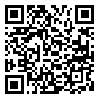Background and purpose: Hemodynamic monitoring is necessary after coronary artery bypass grafting (CABG). For this purpose, the arterial line should be rinsed to prevent obstruction. There is no consensus on flushing methods. This study aimed to compare the effect of continuous and intermittent flushing on maintaining patency of the arterial line in patients after CABG.
Materials and methods: This randomized clinical trial was performed in 60 patients in cardiac surgery ICU of Imam Reza in Mashhad, 2016. Patients were randomly assigned into two groups: continuous and intermittent flushing. In continuous group, the arterial line was continuously flushed with heparin solutionat the rate of 2cc/h under pressure 300 mmHg and in intermittent flushing group, heparin solution (5cc) was used every 3 hours. In both groups, the catheter patency was assessed for 48 hours. Data was analyzed using SPSS software and statistical tests.
Results: The mean ages of patients in continues and intermittent flushing groups were 57.7±7.8 and 56.1 ± 9.5 years, respectively. Mean duration of patency of the arterial line in continuous group and intermittent flushing group was 46.5 ±5.7 and 39.7 ±10.7 hours, respectively. On second day after surgery, the incidence of arterial occlusion line in intermittent flushing group (46.7%) was significantly higher than that of the continuous flushing group (6.7%).
Conclusion: Continues flushing of the line to maintain its patency and reducing the blockage was found superior to intermittent flushing, therefore, it is suggested for washing the arterial line in these patients. Long-term follow-up is recommended.
(Clinical Trials Registry Number: IRCT2016050427741N1)
| Rights and permissions | |
 |
This work is licensed under a Creative Commons Attribution-NonCommercial 4.0 International License. |


